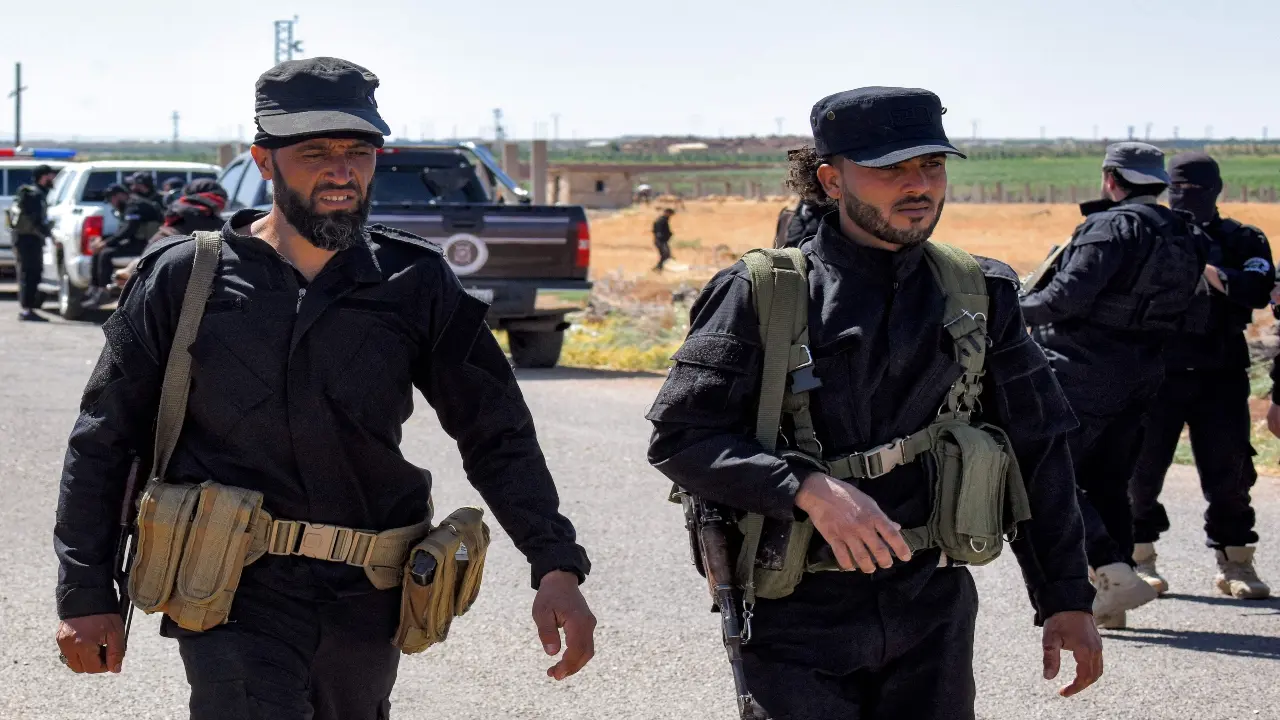World
Israel Targets Syrian Tanks Amid Intense Clashes in Sweida

Israel’s military confirmed on Monday that it targeted Syrian army tanks in southern Syria, coinciding with violent clashes involving Syrian government forces, local Bedouin tribes, and Druze militias. These confrontations have led to dozens of fatalities in the Sweida province, as fighting erupted between local militias and tribal factions.
According to the Syrian Interior Ministry, more than 30 people have been killed and nearly 100 wounded. The UK-based Syrian Observatory for Human Rights reported an even higher toll, stating that at least 64 individuals died, including two children and six members of the government security forces. The violence reportedly began with confrontations between Druze fighters and Sunni Bedouin clans, with some government forces actively supporting the Bedouins.
Noureddine al-Baba, a spokesperson for the Interior Ministry, addressed the situation on state-run Al-Ikhbariya TV, noting, “Some clashes occurred with outlawed armed groups, but our forces are doing their best to prevent any civilian casualties.” Tensions escalated following a series of kidnappings between the two groups, starting with the robbery of a young Druze man at a checkpoint set up by the Bedouins. Rami Abdurrahman, the director of the Syrian Observatory, indicated that the conflict intensified after the abduction of a Druze vegetable seller, which led to retaliatory actions and further kidnappings.
In response to the ongoing unrest, Syria’s defense and interior ministries have deployed additional forces to the region. The Interior Ministry characterized the situation as a “dangerous escalation” arising from the absence of effective official institutions. This has exacerbated chaos and deteriorated the local security condition, despite repeated calls for calm from community leaders.
Historical Context and International Response
Israel has a history of intervening in Syria, particularly in defense of the Druze community. In May, Israeli forces conducted an airstrike near the presidential palace in Damascus, which was perceived as a warning to interim Syrian President Ahmad al-Sharaa. This strike followed earlier clashes between pro-government forces and Druze militias in the town of Sahnaya and the predominantly Druze suburb of Jaramana. Both Israeli Prime Minister Benjamin Netanyahu and Defense Minister Israel Katz have made statements asserting that Israel “will not allow the deployment of Syrian government forces south of Damascus or any threat to the Druze community.”
Approximately half of the world’s 1 million Druze reside in Syria, with significant populations also in Lebanon and Israel. In Israel, the Druze community is often regarded as a loyal minority, with many serving in the military. Since the fall of former President Bashar al-Assad during a Sunni Islamist-led offensive in December, some Druze segments have grown increasingly cautious of the new authorities in Damascus. This wariness has led to multiple clashes between Druze militias and government-affiliated forces.
The Druze, a small religious sect that emerged in the 10th century as an offshoot of Ismailism, are concentrated primarily in southern Sweida province and surrounding areas. During Syria’s civil war, which has lasted nearly 14 years, the Druze community formed militias to protect themselves from threats posed by Islamic State fighters and other extremist groups.
Israeli forces have consistently maintained a hardline stance towards Syria’s current leadership, citing concerns about the presence of Islamist militias near its borders. They have previously seized parts of the UN-patrolled buffer zone on the Syrian side of the Golan Heights and conducted hundreds of airstrikes against military targets within Syria.
The Trump administration had advocated for the normalization of relations between the new Syrian government and Israel. Although Syrian officials have confirmed indirect discussions with Israel aimed at reducing tensions, they have not acknowledged claims of direct negotiations. U.S. envoy to Syria, Tom Barrack, mentioned that he believes any normalization will occur “like unwrapping an onion, slowly.”
The ongoing conflict in Sweida highlights the complex interplay of local, national, and international dynamics in Syria, where the Druze community continues to navigate a precarious situation amidst escalating violence.
-

 World5 months ago
World5 months agoSBI Announces QIP Floor Price at ₹811.05 Per Share
-

 Lifestyle5 months ago
Lifestyle5 months agoCept Unveils ₹3.1 Crore Urban Mobility Plan for Sustainable Growth
-

 Science4 months ago
Science4 months agoNew Blood Group Discovered in South Indian Woman at Rotary Centre
-

 World5 months ago
World5 months agoTorrential Rains Cause Flash Flooding in New York and New Jersey
-

 Top Stories5 months ago
Top Stories5 months agoKonkani Cultural Organisation to Host Pearl Jubilee in Abu Dhabi
-

 Sports4 months ago
Sports4 months agoBroad Advocates for Bowling Change Ahead of Final Test Against India
-

 Science5 months ago
Science5 months agoNothing Headphone 1 Review: A Bold Contender in Audio Design
-

 Top Stories5 months ago
Top Stories5 months agoAir India Crash Investigation Highlights Boeing Fuel Switch Concerns
-

 Business5 months ago
Business5 months agoIndian Stock Market Rebounds: Sensex and Nifty Rise After Four-Day Decline
-

 Sports4 months ago
Sports4 months agoCristian Totti Retires at 19: Pressure of Fame Takes Toll
-

 Politics5 months ago
Politics5 months agoAbandoned Doberman Finds New Home After Journey to Prague
-

 Top Stories5 months ago
Top Stories5 months agoPatna Bank Manager Abhishek Varun Found Dead in Well









